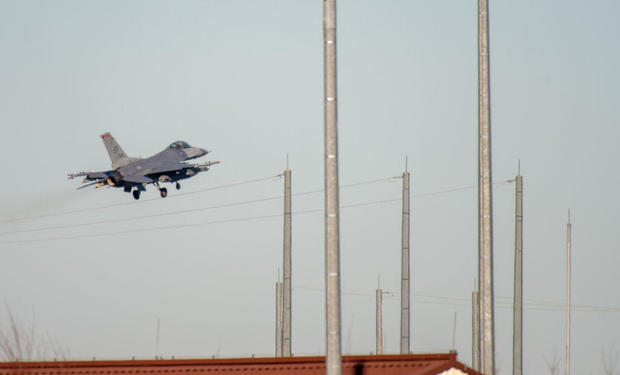A Pentagon study found high rates of cancer among military pilots and found for the first time that ground crews who fuel, maintain and launch planes are also getting sick.
The information has long been sought by retired military pilots who have raised the alarm over the years about the number of air and ground crew members they knew of with cancer. They were told that previous military studies had shown that they were no more at risk than the general US population.
In its year-long study of nearly 900,000 service members who flew or worked on military aircraft between 1992 and 2017, the Pentagon found that aircrew members had an 87% higher rate of melanoma and a 39% higher rate of thyroid cancer than men. Prostate cancer rates are 16% higher and women have 16% higher breast cancer rates. Overall, aircrew had a 24% higher rate of all types of cancer.
The study found that ground crew had a 19% higher rate of brain and nervous system cancer, a 15% higher rate of thyroid cancer and a 9% higher rate of kidney or renal cancer, while women had a 7% higher rate of breast cancer. The overall rate for all types of cancer was 3% higher.
Eric Baradat/AFP via Getty Images
There is also some good news. Both ground and aircrew had much lower rates of lung cancer, and aircrew also had lower rates of bladder and colon cancer.
The data compares service members to the general U.S. population after adjusting for age, sex, and race.
The Pentagon says the new study is the largest and most comprehensive to date. A previous study looked only at Air Force pilots and found somewhat higher rates of cancer, while this one looked at all services and both air and ground crew. Even with the larger approach, the Pentagon warned that the true number of cancers could be higher due to data gaps, which it said it would work to remedy.
Retired Air Force Col. Vince Alcazar, a member of the Red River Valley Fighter Pilots Association, which lobbied the Pentagon, said the study “proves that it’s past time for leaders and policymakers to move from skepticism to faith and proactive support.” And Congress for help. Alcazar serves on the medical affairs committee of the association.
The 2021 defense bill required the study by Congress. Now, since the high rate has been found, the Pentagon must conduct a larger review to try to understand why crews are getting sick.
Possible causes are difficult to isolate, and the Pentagon cautioned that the study “does not indicate that military service in aircrew or ground crew occupations causes cancer, as there are multiple potential confounding factors that cannot be controlled for in this analysis,” such as family history, Smoking or alcohol use.
Harald Teitel/Photo Alliance via Getty Images
But aviation crews have long asked the Pentagon to take a closer look at some environmental factors, such as jet fuel and solvents used to clean and maintain jet parts, sensors and their power sources in aircraft nose cones and radar systems on the decks of the giant starships that land on them. .
When Navy Capt. Jim Seaman returned home from deployment aboard an aircraft carrier, his gear would reek of jet fuel, said his widow, Betty Seaman. The A-6 Intruder pilot died of lung cancer in 2018 at the age of 61. Betty Seaman still has her gear stored and it still smells of fuel, “which I love,” she said.
He and others wonder if there is a link. He said the crew would talk about how the ship’s water systems smelled of fuel.
He said he and others have mixed feelings about finally seeing in the data what they’ve suspected for years. But “it has the potential to do a lot of good, like early contact, early detection,” he said.
The study found that when crew members were diagnosed with cancer, they were more likely to survive than members of the general population, which the study suggested was because they were diagnosed earlier due to regularly required medical checkups and were more likely to improve their health. Because of their military fitness requirements.
The Pentagon acknowledged that there were gaps in the research that likely led to the undercounting of cancer cases.
The Military Heath System database used in the study did not have reliable cancer data until the 1990s, so it may not have included pilots who flew early-generation jets in earlier decades.
The study did not include cancer data from the Department of Veterans Affairs or state cancer registries, meaning it did not capture cases from former crew members who became ill after leaving the military medical system.
“It is important to note that study results may have differed if additional older ex-service members were included,” it said.
To remedy that, the Pentagon is now pulling data from those registries to add to the total count, the study said.
A second phase of the study will attempt to isolate the causes. The 2021 bill would require the Department of Defense not only to identify “carcinogenic toxic substances or hazardous substances associated with military flight operations,” but also to determine the types of aircraft and locations where diagnosed crews served.
After her husband became ill, Betty Seaman asked him if he would have chosen differently, knowing his service might have been linked to his cancer.
“I flat out asked Jim. And he, without hesitation, said, ‘I’ll still do it.'”


